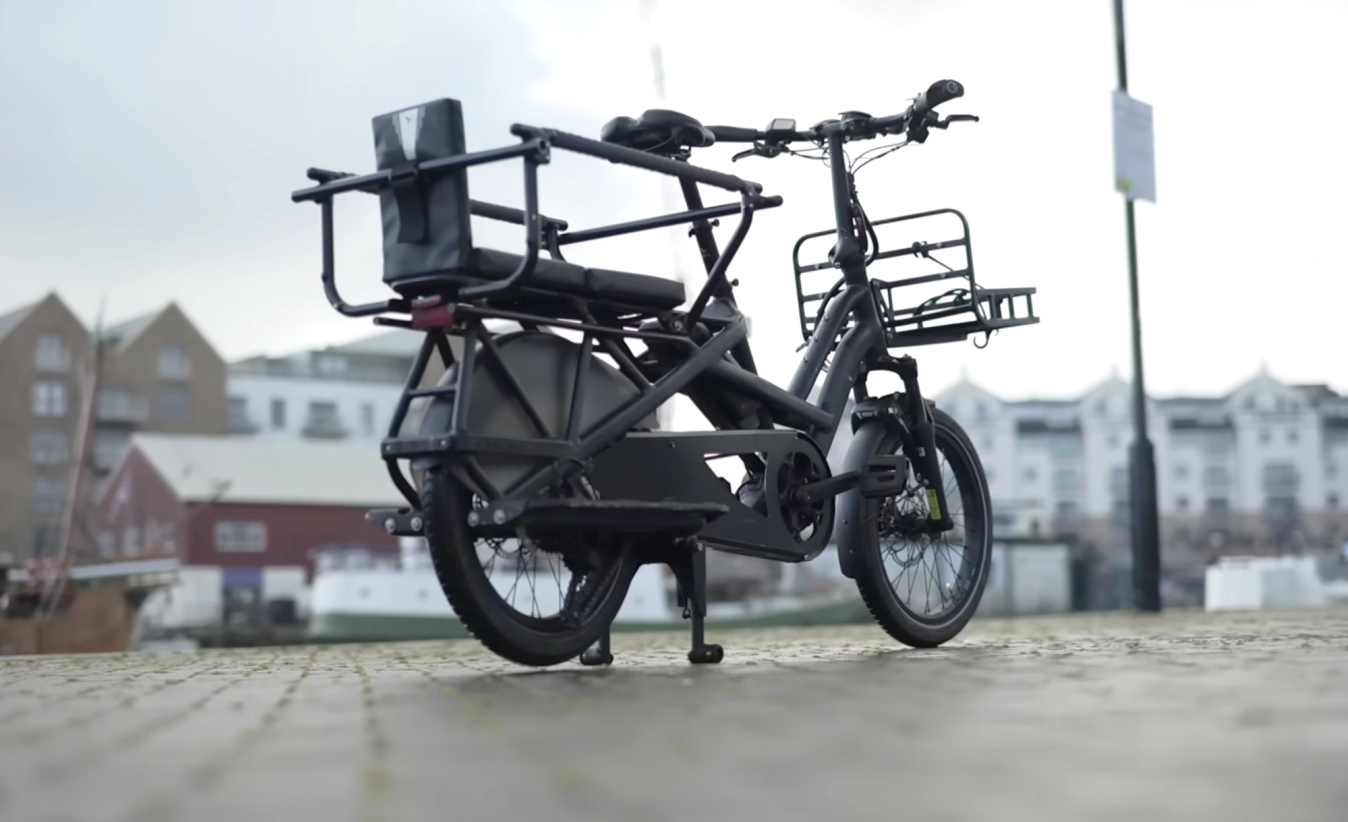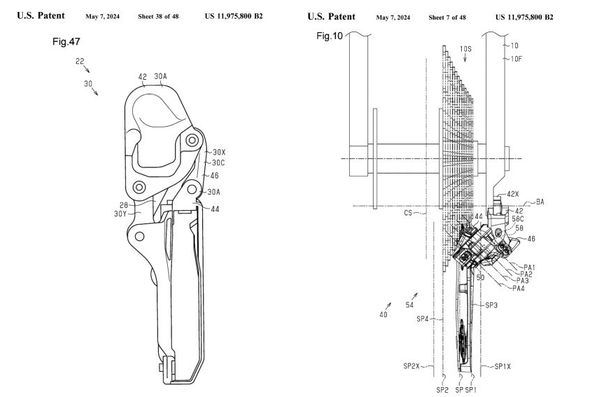Everything you need to know about the Cycle to Work scheme
If you live and work in the UK, the chances are you can access a Cycle to Work scheme. But is it a good idea and what are the risks and rewards?
James Howell-Jones
Junior Writer
© GCN
Cycle to Work schemes are designed to help employees who commute to work by bike
What is the Cycle to Work scheme?
The Cycle to Work scheme is a UK government tax initiative that gives employees a cost-effective way to get a brand-new bike and accessories without an up-front cost. If your employer has signed up for a Cycle to Work scheme, you can choose a new bike, accessories or components, which your employer will buy and rent back to you.
Practically speaking, it’s as if the bike or gear is your own. You keep hold of it, look after it, repair it when it breaks. Your employer takes a portion from your gross salary to pay for it, and after one, two, three, four or six years, depending on your scheme, you will have ‘paid off’ the equipment. Your employer still owns it, but for a small fee, you will be able to transfer ownership to yourself.
Since the bike is paid for with your pre-tax income, you make a saving of either 30% or 40%, minus the fee to transfer the bike or equipment into your name.
Not in the UK? Some other countries have similar schemes in place, including the Netherlands, Belgium, France and New Zealand.
For our American readers, whilst there is no specific cycling-to-work incentive, the US government is currently considering a bill called the Electric Bicycle Incentive Kickstart for the Environment (E-BIKE) Act, which would offer a refundable tax credit amounting to 30% of the price of an e-bike, capped at $1,500. Plus, many states have their own schemes for e-bike tax rebates, which we've listed here.
Contents (jump to)
- What is the Cycle to Work scheme?
- How does the Cycle to Work scheme work?
- What can I buy through the Cycle to Work scheme?
- Can I buy an e-bike through the Cycle to Work scheme?
- What are the advantages of the Cycle to Work scheme?
- What happens at the end of the Cycle to Work payment period?
- What are the downsides of the Cycle to Work scheme?
- How much do you pay each month?
- How do you apply?
- What happens if I leave my job or get made redundant?
- How much will I save by using a Cycle to Work scheme?
- Are there any limits?
- Are there any fees?
- Why don't bike shops like the Cycle to Work scheme?
- What are the benefits to the employer of the Cycle to Work scheme?
- Is the Cycle to Work scheme worth it?
How does the Cycle to Work scheme work?
There is not one single Cycle to Work scheme. The government set out the basic initiative in 1999, but lots of private companies have taken it upon themselves to facilitate the process. That means that, depending on which one your company has signed up for, the benefits and terms and conditions could vary.
These providers include:
The cost of whatever it is you’ve chosen, whether that’s a new bike, a helmet, or anything else, is spread over equal monthly payments. Most schemes spread the cost across 12 monthly payments, although it’s increasingly common for schemes to offer the payment to be spread across 24, 36, 48 or even 72 months.

© GCN
E-bikes are available through Cycle to Work schemes
What can I buy through the Cycle to Work scheme?
You can access a surprisingly large range of bikes and equipment through the Cycle to Work scheme. The specific brands available will vary depending on which scheme your employer has signed up for, and which retailers they allow access to, but it’s safe to assume you will be able to access road bikes, mountain bikes, hybrid bikes, folding bikes and e-bikes, as well as cycling apparel, helmets, lights, tools, and anything else that could reasonably be used to cycle to work with.
Some schemes even allow you to buy components, so if you already have a bike, but want a new groupset, handlebars, wheels or anything else, you might be able to get it through the Cycle to Work scheme.
Can I buy an e-bike through the Cycle to Work scheme?
Yes, you can buy an e-bike through the Cycle to Work scheme. A few years ago, there was a £1,000 limit for Cycle to Work scheme purchases, which would exclude most e-bikes. Nowadays, there is no limit on the value of Cycle to Work scheme purchases, although some employers and providers put their own limits in place. Besides the specific restrictions your employer has put in place then, you can use the scheme to get an e-bike.
Read more: 10 benefits of riding an e-bike
What are the advantages of the Cycle to Work scheme?
The scheme has a number of advantages, the most important being the fact that you save money on cycling equipment. Having chosen and received your items, the monthly payment is taken from your pre-tax income, in what’s called a ‘salary sacrifice’. This means your taxable income is reduced by whatever the value of the bike or equipment is. For basic rate taxpayers, a Cycle to Work scheme can save you up to 30% on a bike or equipment, and for higher rate taxpayers, it can save you up to 40%.
The second advantage of the scheme is that the cost of the equipment is spread out with interest-free payments across a period of 12-72 months, depending on which scheme you’ve chosen. With no up-front payment, it can make the high price of modern cycling equipment a lot easier to swallow.
Finally, it’s safer than other finance options or loans. You don’t need a good credit score to get approved, and since your company takes the payments from your gross salary, it’s not linked to your bank account and you can't get caught out by missing a payment.
What happens at the end of the Cycle to Work payment period?
At the end of the repayment period, you still don’t own the bike, but you have options. These will vary depending on the scheme.
Regardless of which scheme your company has chosen, if you want the ownership of the bike to pass to you, you’ll have to pay a transfer of ownership fee. This is to avoid any ‘benefit-in-kind liability’, a tax that the government puts on employee benefits.
The amount you pay to transfer ownership to yourself depends on how long you’ve had the bike or equipment for, and which scheme you have signed up for.
Most schemes follow a depreciation curve calculation laid out by the government. With these, the longer you wait, the better. After a year (assuming the bike or equipment cost more than £500), you’ll have to pay 25% of the value of the equipment to transfer ownership. That gradually decreases with each year you wait, until after five years you pay just 2%, and after six years you pay nothing.
Alternatively, you can simply hand the bike or equipment back. Of course, this isn’t the wisest thing to do – by waiting a few years, the bike or equipment will become yours for no extra cost.
The Green Commute Initiative, Halford and GoGeta have chosen to simplify this transfer by just charging everyone £1 to make the bike their own, doing away with the complicated time-based calculation.
- Read more: GCN Tech Clinic: Can I train on my commute?
What are the downsides of the Cycle to Work scheme?
Once signed, and once the 14-day cooling-off period has elapsed, the Hire Agreement is non-cancellable. That means that if you leave your job or are made redundant before your cycle scheme is up, you will have to make the remainder of the payments on your bike and gear in one lump payment, which will come out of your final pay cheque. Crucially, this final payment will come from your net pay, so you’ll lose the tax advantage when you pay off the remainder of the bike. This still applies if you are made redundant.
Since the agreement is non-cancellable, if your bike or gear gets lost or stolen whilst you’re still paying for it, you will still have to keep paying your instalments. Therefore if you sign up for the scheme, it’s worth doing everything you can to protect your bike, including getting good locks and taking out insurance.
You don’t own the bike until you’ve paid to transfer ownership to yourself at the end of the payment period. That means that the bike or equipment isn’t yours to sell on the second-hand market before then. Given the length of the hire periods, this might become restrictive.
Additionally, you rarely get access to the big discounts with cycle to work schemes. Most bikes are sold at full price through the scheme, so you can't search for deals and pick up a bargain.
Finally, since the discount is linked to income tax level, it means that the scheme offers a greater discount to higher earners, whilst lower earners, who arguably have a greater need for a discount, have to pay more for cycling gear. Basic rate taxpayers, who earn between £12,571 and £50,270 a year, stand to save up to 30% from each monthly payment, whilst higher rate taxpayers who earn between £50,270 and £125,140 stand to save up to 40% from each monthly payment.

© GCN
You aren't restricted to commuter-style bikes on the scheme
How much do you pay each month?
The amount you need to pay each month varies depending on three things:
- How much your bike or accessories cost
- How long your hire period is
- How much you earn
The cost of the bike or accessories you’ve chosen is paid in equal instalments for however long you’ve chosen. That could be 12 months, 24 months, 36 months, 48 months, and in some cases, 72 months. When you sign up, you’ll be able to decide how long you want the repayment period to be, and the options will depend on which scheme your company has made available to you.
Your salary impacts how much you pay each month too, because the payments are taken from your salary before tax. That means that basic rate tax payers end up saving 30% on each monthly payment, whereas higher rate taxpayers save 40% on each monthly payment.
How do you apply?
First of all, check which scheme your employer uses, as that is the only one you will be able to use. Once you know which scheme you have access to, register on the scheme’s website and find their participating retailers.
Next, choose whatever you want, whether that’s a bike, a helmet, a new set of lights, a pair of bib shorts, or anything else. They all have to come from the same retailer, you can’t mix and match between all the available shops to find the best deal.
Ask the retailer for a cycle to work scheme quote, and submit that quote to the relevant cycle scheme website. Once they’ve received it and your employer approves it, they will issue you with a special voucher, which you then take to the bike shop. They then order your parts for you, and that’s it. The monthly salary sacrifice will begin.
Often, you get a free service with the bike too, so make sure you use it. If you don’t it might affect the validity of your warranty.
What happens if I leave my job or get made redundant?
Once signed, and following a 14-day cooling off period, the Hire Agreement is non-cancellable. That means that if you leave your job before your hire period is up, you will have to pay the remainder in one lump payment, which will come out of your final pay cheque.
Crucially, this will come from your net pay, not gross – ie., you will lose the tax benefit and pay for the rest of the bike from your earnings after income tax has been deducted. Additionally, it’s likely that you will be required to pay the ownership transfer fee as well.
This process still applies if you are made redundant, which is worth bearing in mind when using a Cycle to Work scheme.
How much will I save by using a Cycle to Work scheme?
The amount of money you save depends on the value of the things you buy, the amount you earn, and the amount of time you’re willing to wait before transferring ownership of the bike or equipment to yourself. For the following examples, we’ll assume the bike or equipment is worth more than £500.
If you are willing to wait six years for the ownership to pass to you, you will make the full saving: 30% for basic rate taxpayers, and 40% for higher rate taxpayers. It will cost nothing to transfer ownership to yourself.
If you wait five years before transferring ownership, you’ll pay 2% of the original value to make the bike your own. That means a total saving of 28% for basic rate taxpayers and 38% for higher rate taxpayers.
If you wait four years before transferring ownership, you pay 7% to transfer ownership, giving a total saving of 23% for basic rate taxpayers and 33% for higher rate taxpayers.
If you wait three years before transferring ownership, you’ll pay 12% of the original value of the bike or equipment to make it your own. That brings the savings down to 18% for basic rate taxpayers and 28% for higher rate taxpayers.
To transfer ownership after two years, you need to pay 17% of the initial value. That brings the savings down to 13% for basic rate taxpayers and 23% for higher rate taxpayers.
If you want the bike to be yours after 18 months, as some schemes allow, you will pay 21% to change the ownership. That brings the saving down to 9% for basic rate taxpayers and 19% for higher rate taxpayers.
If you transfer ownership after just one year, you will pay 25% of the original value to do so. That means basic rate taxpayers will save just 5% on the original price, and higher rate taxpayers will save 15%.
You can of course choose not to transfer ownership to yourself at all, and instead give the bike back after your hire period is complete. This is a bad idea, as you will have paid for the bike, but you won’t be left with it to use or resell.
Read more: I can't cycle to work, or can I?
Are there any limits?
No. It used to be limited to £1,000, but now, there is no financial limit set by the government. Having said that, some employers will impose their own limitations and restrictions on the scheme.

© GCN
With no more £1,000 limit, you can spend as much as you like with most Cycle to Work schemes
Are there any fees?
Each individual cycle to work scheme provider takes a small cut from the price of the items you choose from the retailers, usually of about 5-15%. In many cases, especially with smaller bike shops, retailers pass that cost onto consumers by charging an additional 'commission charge', again ranging between 5-15% depending on the scheme provider.
Often, this extra fee is only applied if the bike or equipment is being sold at a discount rate. If the bike is being sold at its full RRP price, most retailers absorb the commission charge cost themselves, because the profit margin on the equipment allows for it. However, if you're buying a bike at a sale price, there's a chance that retailers will ask that you pay the commission charge.
The notable exception to this is Cyclescheme, the original cycle to work scheme provider, who recently announced that they would not allow their retailers to apply extra fees.
Why don't bike shops like the Cycle to Work scheme?
You might have seen that bike shops want to reform the cycle to work scheme, with over 500 bike shops uniting recently to demand changes to the scheme. For the most part, their issue is with the way the fees for the scheme are distributed. Most providers charge bike shops between 10-15% to use the scheme. As a result, bike shops make very little money from bikes sold through the scheme.
The exceptions here are the Green Commute Initiative and GoGeta, who charge significantly lower fees than the main providers. The Green Commute initiative is a not-for-profit scheme that charges retailers just 5%. GoGeta is new scheme that charges retailers 3%, then charges employees 4%.
What are the benefits to the employer of the Cycle to Work scheme?
If you’re an employer wondering why you should sign up for the cycle scheme, or if you’re an employee looking to persuade your boss to sign up, the most concrete benefit is that your employer will save 13% on their National Insurance contribution for you.
Additionally, many prospective employees will look for a Cycle to Work scheme when deciding to work somewhere. Setting one up for your staff can attract new talent and help you keep hold of your staff.
Is the Cycle to Work scheme worth it?
The Cycle to Work scheme offers the chance to get your hands on a bike or cycling equipment without an up-front cost, and has the potential to save you a substantial amount of money, if you are able to wait long enough before transferring ownership. Unlike with other financing options, there is no risk that a missed payment could land you in hot water.
Yet the Cycle to Work scheme comes with its own risk. If you leave your job or are made redundant, the remainder of the payment will be taken from your net salary, meaning that you will no longer benefit from the 30% or 40% tax break. If your job comes to an end and times are hard, the last thing you need is a lump payment for an expensive bike or e-bike disappearing from your final pay cheque.
Then again, even in a worst-case scenario, you won't end up paying more for your bike than the RRP. The Cycle to Work scheme is widely used, and gives cyclists a way of getting discounted equipment without an up-front cost. If you want to spread the cost of cycling, and it's something your employer offers, it's something worth considering.









.jpg?w=600&auto=format)
